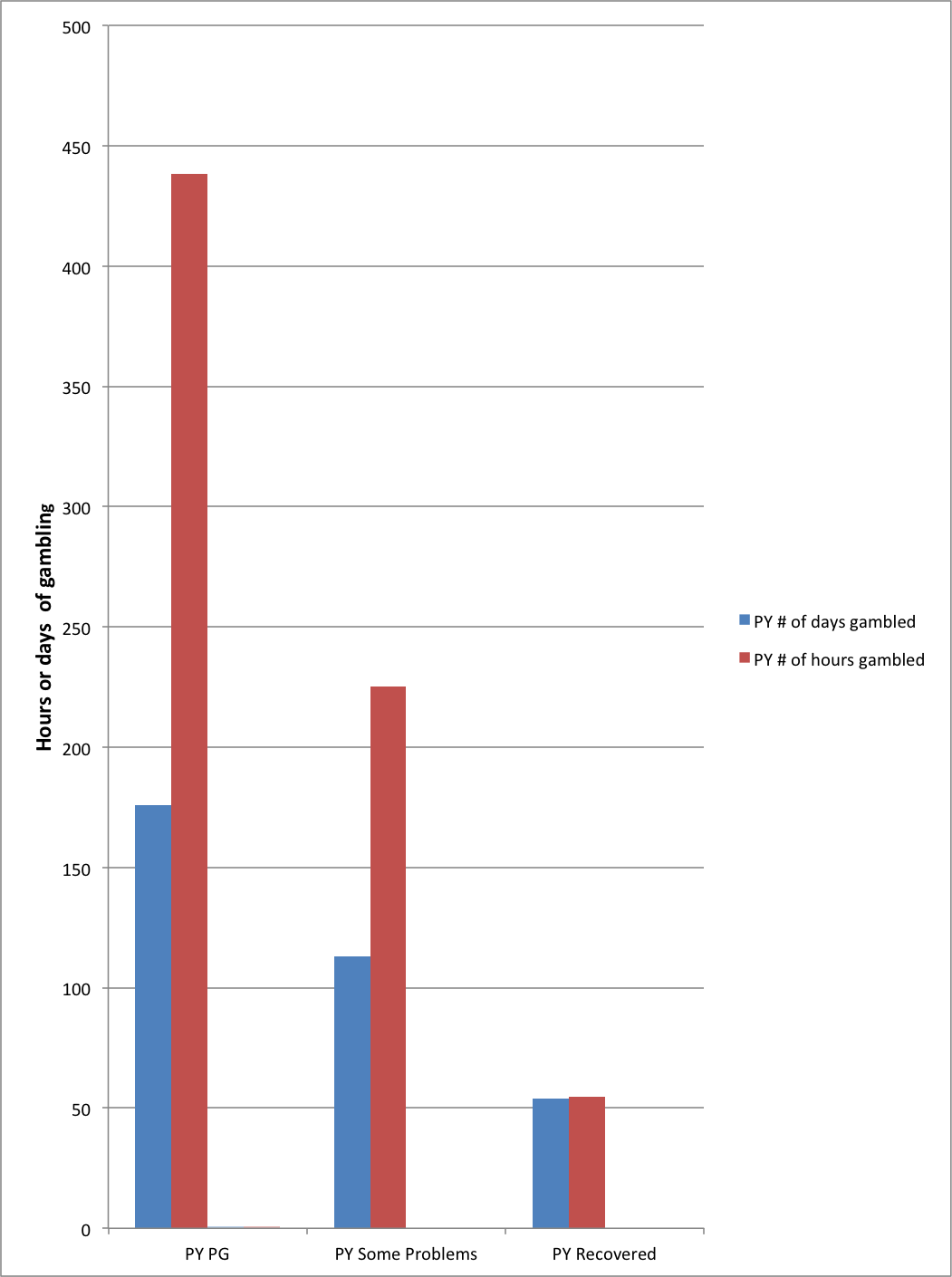The goal of most gambling treatment is abstinence from gambling. Though not everyone who engages in treatment achieves this “cold turkey” goal, it is possible that the goal itself deters some individuals from seeking treatment. This week’s WAGER reports results of a study that examined how common abstinence versus controlled gambling are among problem gamblers in recovery (Slutske, Piasecki, Blaszczynski, & Martin, 2010).
Method
- Participants were 104 individuals who qualified for DSM-IV pathological gambling (PG) among a general population sample of 2,382 twin pairs drawn from the Australian twin registry.1
- Researchers classified these life-time PG gamblers into three groups according to their symptoms during the past year:
- Past-year PG (N = 28): Gamblers who qualified for PG within the past year
- Some problems (N = 32): Gamblers who met 1 – 4 PG criteria within the past year
- Recovery group (N = 44): Gamblers who had no symptoms of PG within the past year.
- Researchers assessed the following indicators of gambling involvement during the heaviest gambling period and during the past year:
- Number of days spent gambling
- Number of hours spent on a typical gambling day
- Percentage of yearly income spent on gambling
- Number of different gambling activities –gambling versatility (e.g., horse and dog betting, casino table games, keno, bingo etc.).
Results
- Almost all of the recovered gamblers (90%) gambled in the past year, and less than 20% received any formal treatment.
- As Figure 1 shows, recovered gamblers demonstrated greatly reduced gambling activity, compared both to other non-recovered participants and to their own previous activity.
Figure 1. Gambling involvement of recovered, partially recovered, and symptomatic PGs
PY=past year; PG=pathological gambling
Limitation
- This is a correlational study, based on a cross-sectional survey about past behavior. Therefore we cannot conclude that controlled gambling caused PG recovery.
- Measures of gambling activity are based on retrospective self-report and may not reflect actual gambling.
Conclusion
This study does not support the assumption that abstinence is required for PG recovery. Only 10% of those who recovered from gambling-related problems did not gamble during the past year. However, the recovery group demonstrated substantial decreases in gambling involvement compared to non-recovery groups. As with any correlational study, this study does not conclude causality. Future controlled experiments or longitudinal studies are required to examine if abstinence or controlled gambling lead more effectively to PG recovery. However, this study does suggest that allowing for the possibility of a controlled gambling, or “warm turkey”2 goal within treatment might increase treatment engagement
-Julia Braverman & Sarah Nelson
What do you think? Please use the comment link below to provide feedback on this article.
References
Miller, W. R., & Page, A. C. (1991). Warm turkey: other routes to abstinence. Journal of Substance Abuse Treat, 8(4), 227-232.
Slutske, W. S., Piasecki, T. M., Blaszczynski, A., & Martin, N. G. (2010). Pathological gambling recovery in the absence of abstinence. Addiction, 105(12), 2169-2175.
——————
1 The 104 participants in this study were derived from 102 different twin pairs: only two pairs of related twins were included in the sample.
2 Slutske and colleagues (2010) refer to the goal of engaging in controlled gambling as a “warm turkey” approach. The term was first used by Miller & Page (1991) to describe controlled drinking.






Charles Vorkoper November 25, 2011
Qestions about your study:
1. What was the relevance of the use of twins in this study?
2. Is it possible to draw another conclusion from your study? — Treatment with an abstinance goal reduces future gambling – even though there is not 100% abstinance? I read your criteria on abstinance to require 100% behavioral change. Your report would suggest to me that the treatment studied was very successful. As one who treats problem gamblers, I would be proud of my part in this treatment if my clients received a similar report. You have made a case for treatment.
3. The more serious question is: Who has the abstiance goal – the gemblers or the treatment professional? I think the most important issue is the gambler’s goal in treatment. This is likely a more powerful indicator of outcome than the treatment professional’s goal. And I am aware that gamblers are typically less than honest, making such a consideration difficult.